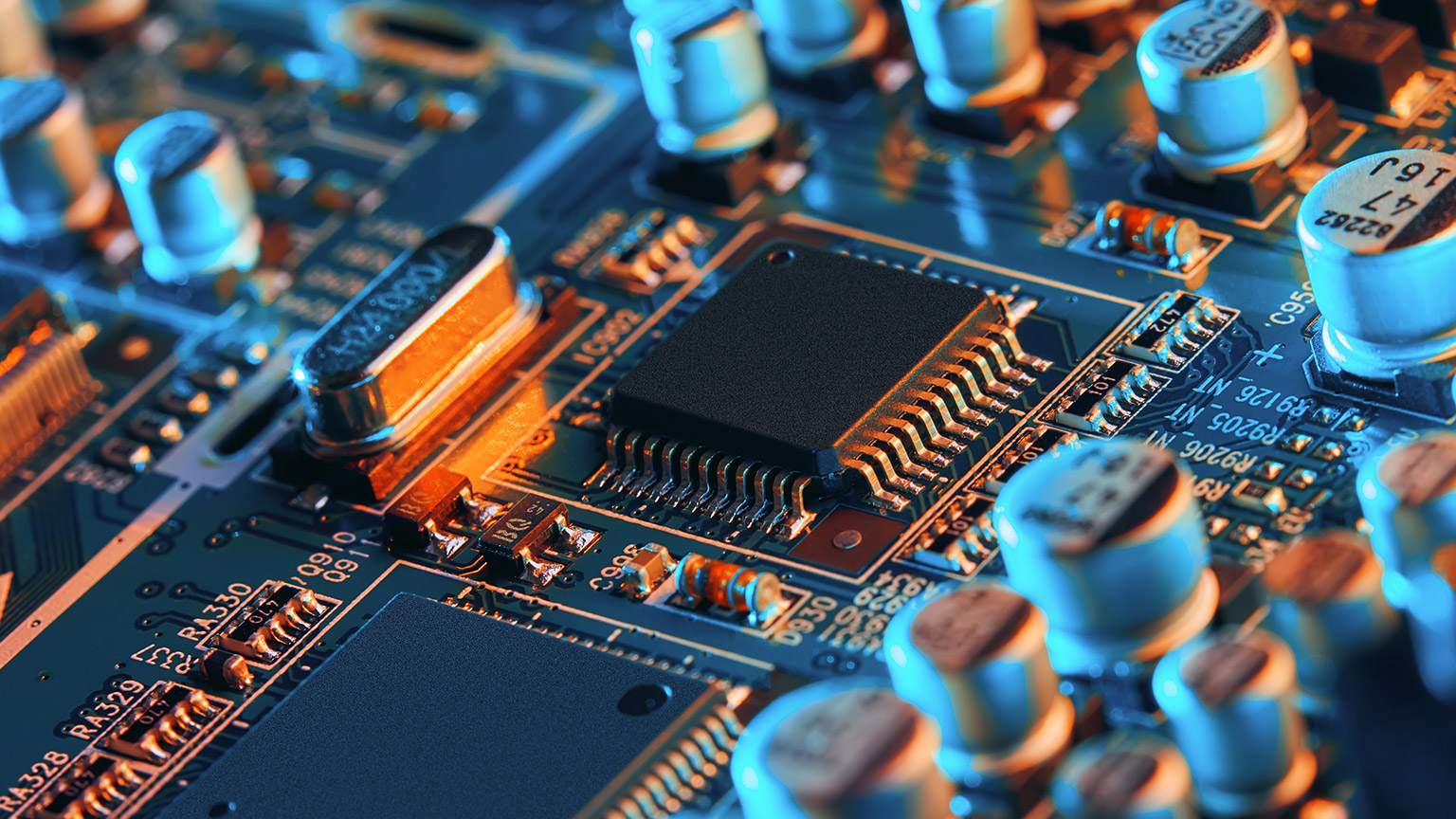The learning content in this topic is about:
- Identify different types of electronic components either by inspection of given components, or by selection from a physical or pictorial display.
- Demonstrate knowledge of semiconductor diodes.
- Demonstrate knowledge of DC power supply principles.
- Demonstrate knowledge of electrostatic discharge precautions for semiconductors.
- Explain magnetic interference.
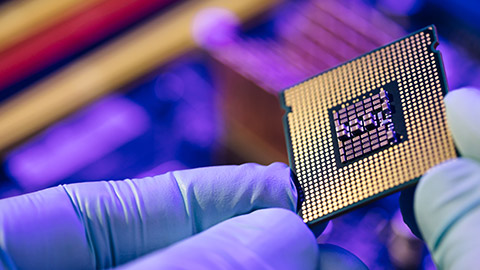
What we're covering:
- Semiconductor theory
- Valence bands
- Energy gaps
- Doping
- P-type & N-type semiconductors
Semiconductor theory is the study of materials that have properties between those of conductors (such as metals) and insulators (such as non-metals). These materials, called semiconductors, play a vital role in modern electronics because they allow for the precise control and processing of electrical signals, enabling the development of advanced technologies that we use every day.
Common examples of semiconductors include silicon, germanium, gallium arsenide, indium phosphide, gallium nitride, and silicon carbide. These materials are used in microprocessors, memory chips, solar cells, LEDs, transistors, and other electronic components.
In semiconductors, conductivity depends on the movement of charged particles called electrons. Semiconductors have moderate conductivity, falling between metals and insulators. (Recall metals are good conductors because their outer electrons can move freely, while insulators have low conductivity because their electrons are tightly bound and cannot move easily.)
In a semiconductor, the behaviour of electrons and "holes" (absence of electrons) is key. At low temperatures, electrons are tightly bound to their atoms, and there are not enough free charge carriers to conduct electricity. However, as the temperature increases, some electrons gain enough energy to break free from their atoms, creating free charge carriers. These free carriers allow the semiconductor to conduct electricity.
Watch this video before proceeding to the next section.
Valence Bands
In a semiconductor, valence bands play a crucial role. Imagine electrons surrounding an atom like a cloud. These electrons occupy different energy levels, or "bands," around the atom. The valence band is the outermost energy band that contains the electrons closely associated with the atoms. These valence electrons determine the bonding and chemical properties of the material.
Energy Gaps
Energy gaps, also known as bandgaps, are the spaces between different energy bands in a semiconductor. They are the ‘hurdles’ that electrons need to overcome to move from one band to another. In conductors, the valence and conduction bands overlap, allowing electrons to move freely and conduct electricity. In insulators, there is a large energy gap, so electrons cannot easily move from the valence to the conduction band, resulting in very low conductivity. Semiconductors have a moderate energy gap, which means that at room temperature, some electrons can jump from the valence band to the conduction band when given additional energy.
The size of the energy gap is crucial because it determines how easily a semiconductor can conduct electricity. A small energy gap allows electrons to move more easily and leads to higher conductivity. A larger energy gap requires more energy for electrons to move, resulting in lower conductivity.
By controlling the energy levels and manipulating the energy gaps in semi-conductors, we can change their conductivity and use them in various electronic devices. This ability to finely tune conductivity makes semiconductors invaluable in the field of electronics.
DOPING
Doping is a process used to intentionally introduce impurities into semiconductor materials to modify their electrical properties. It involves adding a small number of specific atoms, known as dopants, to the semiconductor crystal lattice.
P-type Semiconductor
To create a P-type semiconductor, a dopant with fewer valence electrons than the semiconductor material is added. Common dopants for creating P-type semiconductors are boron, aluminum, and indium. These dopants have one less valence electron than the atoms in the semiconductor material.
When the dopant atoms are introduced, they replace some of the original atoms in the crystal lattice. However, since the dopant atoms have one less electron to share, they create "holes" in the crystal structure. These holes can accept and carry positive charge carriers, known as "positive holes." Positive holes behave as if they were mobile, positively charged particles.
So, in a P-type semiconductor, the majority charge carriers are positive holes. These holes can move around and conduct electricity. P-type semiconductors are often used as the base material for components like diodes and transistors.
In an N-type semiconductor, impurities are added to introduce extra electrons as majority charge carriers. These electrons are also free to move and conduct electricity.
N-type Semiconductor
To create an N-type semiconductor, a dopant with extra valence electrons compared to the semiconductor material is added. Common dopants for creating N-type semiconductors are phosphorus, arsenic, and antimony. These dopants have one extra valence electron than the atoms in the semiconductor material.
When the dopant atoms are introduced, they also replace some of the original atoms in the crystal lattice. The extra valence electron from the dopant creates an excess of negatively charged particles, known as "free electrons." These free electrons are mobile and can move through the material, conducting electricity.
In an N-type semiconductor, the majority charge carriers are free electrons. They are responsible for carrying the electrical current through the material. N-type semiconductors are commonly used in components like transistors and integrated circuits.
The doping process allows engineers to precisely control the electrical properties of semiconductors. By selectively doping different regions of a semiconductor material, they can create complex electronic devices that rely on the interactions between P-type and N-type regions, such as diodes, transistors, and integrated circuits.
Formation of a PN Junction
The interaction between P-type and N-type semiconductors creates a PN junction, which is a fundamental building block in many electronic devices. The P-type has positively charged holes, while the N-type has negatively charged free electrons. When they meet, a depletion region forms where charge carriers are depleted.
The PN junction behaves differently depending on the biasing voltage applied to it.
In forward bias, current flows easily through the junction, while in reverse bias, the current is almost non-existent. This property is utilised in diodes, which allow current to flow in one direction and block it in the opposite direction.
Activity
Select the correct answers from the options below.

What we're covering:
- Semiconductor devices
- Diodes
- Transistors
- Resistors
- Capacitators
- Inductors
Semiconductor devices are electronic components designed, developed and manufactured based on the semiconductor materials like Silicon (Si), Germanium (Ge) and Gallium Arsenide (GaAs). They utilise the unique properties of semiconductors and find wide-ranging applications in computers, smartphones, televisions, and various other devices we rely on daily.
Semiconductors have had an enormous impact on our society. They are at the core of microprocessor chips and transistors, which are essential components in computerized systems and devices that utilise radio waves.
Have you heard the term "Silicon Valley"? What does it refer to?
Some of the basic electronic components are resistor, capacitor, transistor, diode, operational amplifier, resistor array, logic gate etc. Do you recognize any of these components in the image?
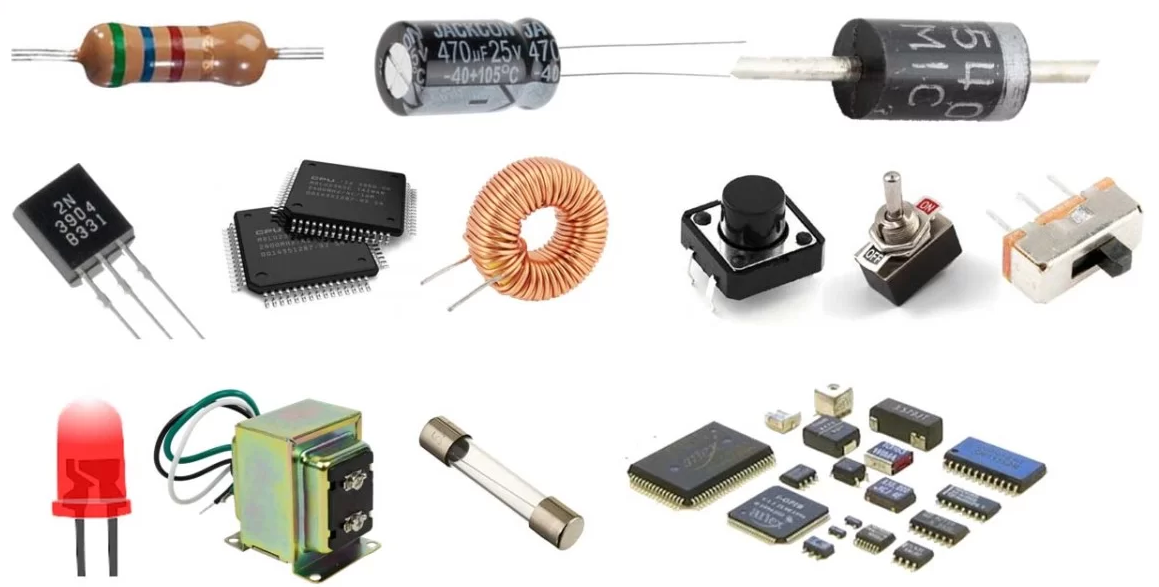
Diodes
A diode is the simplest semiconductor device. Diodes are crucial semiconductor devices in electronic circuits, permitting current in one direction while blocking it in the opposite direction.
- Function: Diodes serve as one-way valves for electric current. They enable current to flow freely in the forward bias direction while hindering or minimising current in the reverse bias direction.
- Operation: Diodes are made of semiconductor materials like silicon or germanium and consist of a p-n junction. This junction is where the positive (p) and negative (n) doped regions meet, enabling distinct electrical behaviour.
- Forward Bias: When a positive voltage is applied to the p-region and a negative voltage to the n-region, the diode is forward biased. This allows current to flow with low resistance through the p-n junction, facilitating current flow in the forward direction.
- Reverse Bias: When a positive voltage is applied to the n-region and a negative voltage to the p-region, the diode is reverse biased. This establishes a high resistance barrier at the p-n junction, impeding current flow in the reverse direction. Consequently, the diode acts as an insulator or a blocking element.
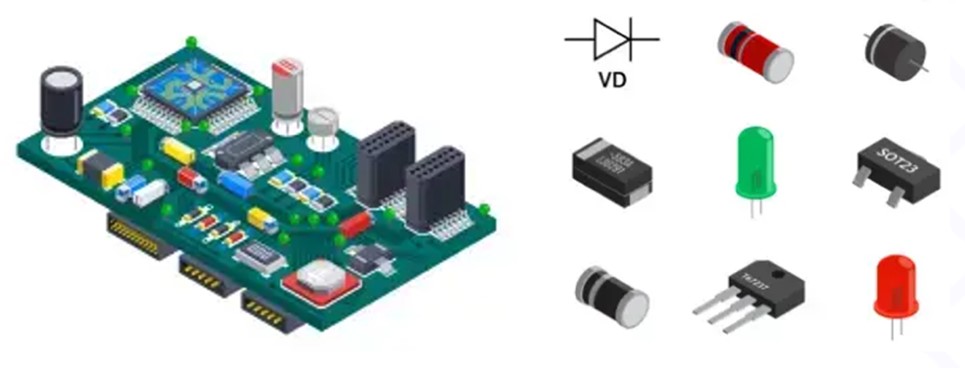
Applications
Some practical uses of diodes include:
- Changing AC to DC: Diodes are used to convert alternating current (AC) to direct current (DC) by allowing the positive part of the electrical signal to pass through while blocking the negative part.
- Controlling Voltage: Some special types of diodes, called Zener diodes, are used to control and stabilise voltage in electronic circuits.
- Demodulating Signals: Diodes help separate the original information from a modulated signal in radios and communication systems.
- Controlling Signal Amplitude: Diodes can be used to control the size of a signal by allowing it to pass through up to a certain point, then blocking any additional increase.
- Making Logic Gates: Diodes are used to build basic building blocks of digital circuits called logic gates, which are used in computers and other electronic devices to process and manipulate information.
- Generating Light: Light Emitting Diodes (LEDs) are a type of diode that produce light when current flows through them. They are used in displays, indicators, and lighting systems.
Transistors
Transistors are electronic devices that play a vital role in circuits, and their function, operation, and applications are rooted in semiconductor theory.
Function: Transistors are electronic devices that have two primary functions: amplification and switching. They can make weak electrical signals stronger, like a mini megaphone for electricity. Additionally, they can control the flow of current, acting as tiny switches that turn current on or off.
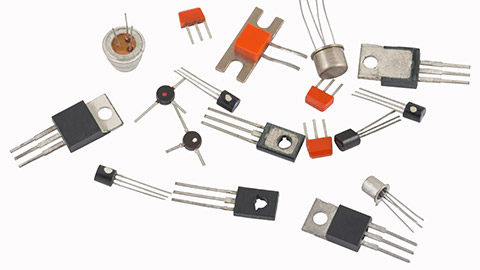
Operation: Transistors are made of a special material called a semiconductor, often silicon. They have three main parts: the emitter, base, and collector. These parts create two junctions within the transistor, which are like electronic roadblocks.
When a small current flows into the base, it controls a larger current flow between the emitter and collector. This happens because the transistor amplifies the small current, making it bigger and allowing a larger current to flow through the collector.
Applications
Transistors have many practical uses in electronic devices, including:
- Amplifiers: Transistors are used in audio systems and radios to make weak signals stronger. They help us hear music and voices clearly by boosting the electrical signals.
- Switches: Transistors can turn the flow of electricity on or off. They are used in computers, smartphones, and other digital devices to control the flow of data and perform calculations.
- Oscillators: Transistors can generate continuous electronic signals or waves. They are used in radios and televisions to produce the frequencies needed for receiving and tuning to different channels.
- Voltage Regulators: Transistors are employed in voltage regulators to keep the electrical voltage steady. This is important for powering electronic devices consistently and protecting them from voltage fluctuations.
- Digital Logic: Transistors form the building blocks of digital circuits. They are used to create logic gates, which process binary data (0s and 1s). This enables the operation of computers, calculators, and other digital devices.
Resistors
Resistors are electronic components that play a crucial role in circuits by limiting or controlling the flow of electric current. While resistors themselves do not rely on semiconductor theory, they are integral to understanding the function, operation, and applications of other semiconductor devices. Let's explore their relationship.

Function: Resistors provide a specific resistance value, measured in ohms (Ω), to impede the flow of electric current in a circuit. This function enables the control and manipulation of voltage, current, and power within the circuit.
Operation: According to Ohm's Law, the current (I) flowing through a resistor is directly proportional to the voltage (V) across it and inversely proportional to its resistance (R), i.e., I = V/R. When a voltage is applied across a resistor, a voltage drop occurs, and this voltage drop is equal to the current multiplied by the resistance.
Applications
Resistors have numerous applications in semiconductor circuits. Here are a few examples:
- Biasing: Resistors are used in biasing circuits to set the operating conditions of semiconductor devices, such as transistors. They determine the voltage and current levels required for proper device operation, ensuring that the device is in the desired state.
- Current Limiting: Resistors are employed to limit the current flowing through semiconductor components, protecting them from excessive current and preventing damage due to overheating. For example, resistors can be used in series with LEDs to control the current flowing through them.
- Voltage Division: In voltage dividers, resistors are used to obtain specific voltage levels. By connecting resistors in series or in combination with other components, the voltage drop across the resistors can be controlled, allowing for precise voltage division.
- Timing Circuits: Resistors are vital components in timing circuits that work in conjunction with semiconductor devices. By controlling the charging and discharging rates of capacitors, resistors determine the timing characteristics of the circuit, enabling applications such as oscillators, timers, and pulse generators.
- Feedback Networks: Resistors are used in feedback networks of operational amplifiers and other semiconductor circuits. They help establish the desired gain, stability, and frequency response characteristics of the circuit, enabling functions like amplification and signal processing.
- Temperature Sensing: Some resistors, such as thermistors, exhibit a change in resistance with variations in temperature. They are employed as temperature sensors in various semiconductor applications, providing feedback on temperature levels for control and monitoring purposes.
Capacitors
Capacitors are electronic components that store and release electrical energy in the form of an electric field. Their function, operation, and applications are closely tied to semiconductor theory.
Function: Capacitors store electric charge and energy when a voltage is applied across them. They are used to store electrical energy temporarily, modify voltage levels, filter signals, and perform various timing and signal conditioning functions in electronic circuits.
Operation: Capacitors consist of two conductive plates separated by a dielectric material, which can be an insulating substance. When a voltage is applied across the plates, an electric field is established between them. Electrons accumulate on one plate, creating a negative charge, while the other plate becomes positively charged. This charge separation results in the storage of electric potential energy in the electric field between the plates.
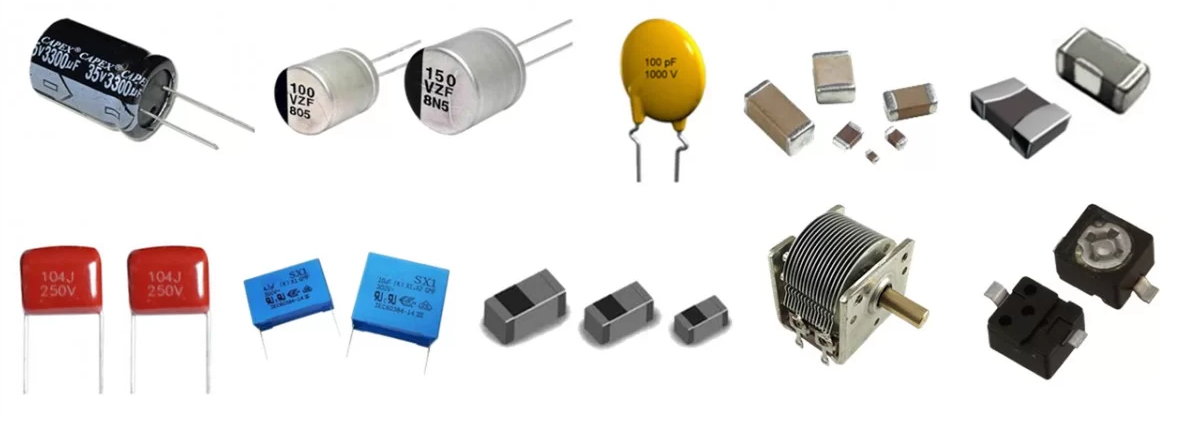
Applications
Capacitors find extensive applications in semiconductor circuits. Here are a few examples:
- Energy Storage: Capacitors store electrical energy and release it when needed. They are like small temporary batteries that can quickly provide a burst of energy in devices like camera flashes or electric car acceleration.
- Timing and Filtering: Capacitors help control the timing of electronic circuits and remove unwanted signals or noise. They are used in radios to select specific frequencies and in electronic devices to smooth out fluctuations in power.
- Coupling and Decoupling: Capacitors allow signals to pass between different parts of a circuit while blocking unwanted signals. They are used to connect audio devices, transfer signals between electronic components, and reduce noise in power lines.
- Voltage Stabilisation: Capacitors help keep voltage levels stable in power supply circuits. They act like a cushion, absorbing any sudden changes in voltage and providing a more steady and reliable source of power.
- Signal Conditioning: Capacitors are used to modify signals in electronic circuits. They can boost weak signals, remove unwanted parts of a signal, or help shape the frequency response of a circuit, making audio or radio signals sound clearer.
- Memory and Data Storage: Capacitors are used in computer memory to store data as electrical charge. This type of memory, called dynamic random-access memory (DRAM), is used in computers, smartphones, and other devices to store and access information quickly.
Inductors
Inductors are electronic components that play a significant role in circuits by storing and controlling the flow of electrical energy. They are closely tied to semiconductor theory.
Function: The primary function of an inductor is to store energy in the form of a magnetic field when an electric current flows through it. It resists changes in current, storing energy during periods of increasing current and releasing energy during periods of decreasing current.
Operation: An inductor is typically made by winding a wire into a coil. When current passes through the coil, a magnetic field is generated around it. The strength of the magnetic field depends on the current flowing through the coil and the number of turns in the coil. This magnetic field stores energy in the inductor.
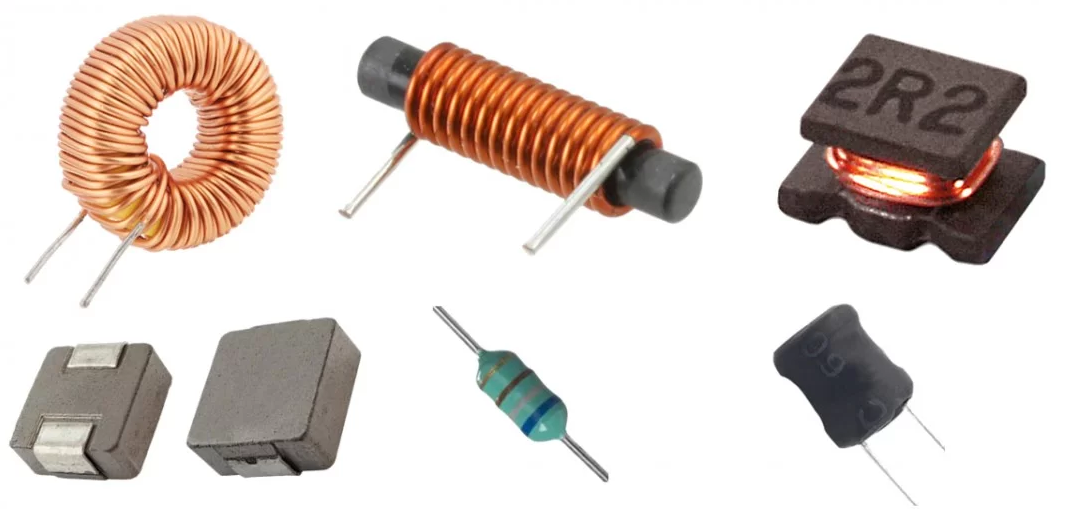
Applications
Inductors are used in various electronic circuits and devices. They are commonly found in power supplies, filters, and oscillators. Inductors help smooth out or filter electrical signals, removing unwanted noise or fluctuations. They are also used in transformers to step up or step-down voltages. Inductors are important in radio frequency (RF) circuits, where they can tune or select specific frequencies. In summary, inductors are essential components in electronics, used for energy storage, filtering, voltage transformation, and frequency tuning.
Activity
Select the correct answers to the questions from the options below.
Activity
Complete the quiz to consolidate today’s lesson then enjoy this video.
Watch this video before proceeding to the next section.
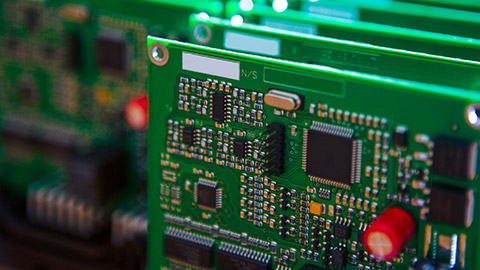
What we're covering:
- Electronic circuit boards
- Integrated circuits
- Microprocessors
- Microcontrollers
Electronic Circuit Boards
Electronic circuit boards, also known as PCBs (Printed Circuit Boards), are crucial components found in various modern electronic devices. These boards serve as the physical platforms on which electronic components are mounted and interconnected.
The composition of a PCB is shown:
- Substrate Base material - provides mechanical support and insulation.
- Copper Layer - thin copper foil to form conductive pathways.
- Solder Mask - protective layer applied over copper traces to prevent short circuits.
- Silkscreen Layer - containing component labels and markings for identification.
The circuitry on a PCB consists of conductive pathways called traces, which are etched onto the board connecting components and enabling electrical flow. Traces form a network that allows the flow of electrical signals between components, ensuring proper functionality.
Electronic circuit boards come in different sizes and designs, depending on the complexity of the device they are used in. They play a crucial role in providing reliable electrical connections, reducing wire clutter, and ensuring the smooth operation of electronic devices.
Watch this video about PCBs. (There is more detail than required from the 4-minute mark.)
Activity
Drag and drop the correct letter next to the correct component.
Integrated Circuit
An integrated circuit (IC), also known as a microchip or semiconductor chip, is a compact electronic circuit manufactured onto a small semiconductor material, typically silicon. It contains various interconnected electronic components like transistors, resistors, capacitors, and diodes, and it connects to a circuit board via the metal pins you can see in the image.

ICs revolutionised electronics by enabling the integration of complex circuits onto a single chip. This integration improves performance, reduces size, lowers power consumption, and increases reliability of electronic devices.
Transistors are the fundamental building blocks of ICs, amplifying and switching electrical signals to perform various functions. Resistors, capacitors, and diodes are also integrated for additional functionalities.
An operational amplifier (op-amp) is an integrated circuit that is widely used in electronic circuits to amplify weak signals, perform mathematical operations, and provide high gain and accuracy. Op-amps are typically packaged as integrated circuits, which contain multiple transistors, resistors, and other electronic components on a small chip.
Manufacturing ICs involves intricate processes, starting with a silicon wafer and undergoing doping, oxidation, and deposition to create layers and patterns for transistors and interconnections.
ICs are extensively used in computers, smartphones, televisions, automotive electronics, medical devices, and more. They serve as the "brains" of these devices, processing data, storing information, and controlling devices. ICs can contain millions to billions of electronic components, leading to sophisticated devices like microcontrollers and microprocessors that power electronic systems.
Microprocessor
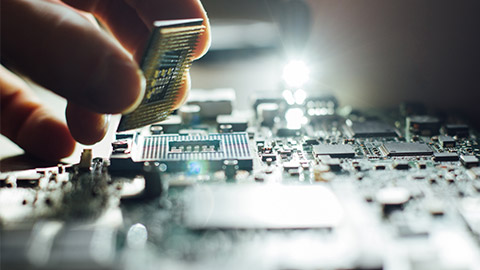
A microprocessor is a type of integrated circuit (IC) that serves as the central processing unit (CPU) of a computer or other digital devices. It acts as the brain of the system and performs various functions, including arithmetic operations, logic operations, control flow, and data processing. Unlike other ICs, a microprocessor is specifically designed for computing tasks and can execute logical and arithmetic instructions that are programmed into it.
Microprocessors are made up of millions (and now even billions) of transistors, resistors, capacitors, and diodes, all integrated onto a single chip. This integration allows for the creation of complex devices capable of handling advanced calculations and running multiple programs simultaneously.
Microprocessors are commonly found in desktop and laptop computers, as well as a wide range of electronic equipment such as cell phones, tablets, and cars. They are responsible for powering these devices and enabling their computing capabilities.
While microprocessors are powerful and versatile, it's important to note that they require external memory, input/output devices, and other support chips to function as a complete computer system. They work in conjunction with these additional components to process data and execute instructions.
Microcontroller
A microcontroller is a small integrated circuit designed for specific tasks, serving as a dedicated computer within a device or system. It combines a microprocessor (CPU), memory, input/output ports, and other peripherals on a single chip.
These programmable devices find extensive use in embedded systems, where they control and monitor the operation of various devices or systems. They are widely employed in automotive systems, home appliances, industrial automation, and medical devices.
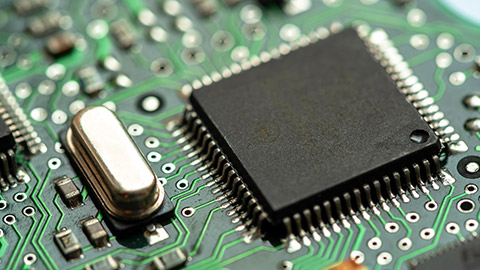
Microcontrollers enable the execution of software instructions stored within their memory, allowing them to perform specific tasks. This programmability provides the necessary intelligence and control for devices to operate autonomously or respond to external inputs.
Watch this video discussing the basics of electronics.
Activity
All electronic components can be classified into two categories:
- Active: Components have gain or directionality. They can amplify an electric signal and produce power.
- Passive: Components that do not have gain or directionality. They are also called Electrical elements or electrical components. They can't introduce net energy into a circuit.
Categorise the following electronic components into the appropriate category: Active or Passive, and provide a brief explanation for each component, justifying why it belongs to the selected category.
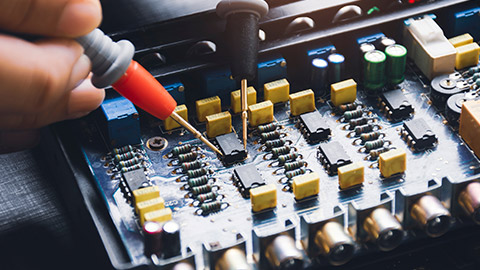
What we're covering:
- Testing PCBs
- Safe handling of electronic components and circuitry
- Safety checklist for working with PCBs
Multimeters can be useful tools for taking measurements on a circuit board. You don't have to insert the meter into the circuit, instead, all you have to do is touch the leads of the multimeter to any two points in the circuit. When you do, the multimeter displays the reading between those two points.
If the PCB has labelled test points the multimeter is used as follows:
- Set the multimeter to the appropriate mode depending on the specific test you're conducting. This could include resistance (ohms), voltage (volts), or continuity.
- Ensure the circuit board is disconnected from any power source before beginning to avoid electric shocks or further damage.
- Connect the red probe to the positive (red) terminal on the multimeter and the black probe to the negative (black) terminal.
- Start with resistance testing to check for short circuits or continuity, by setting the multimeter to the resistance mode (ohms). Touch the two probe tips together to verify the continuity reading. A resistance reading close to zero or a beep, indicates continuity. This helps ensure the multimeter is functioning properly before proceeding.
- Test for shorts between conductors: With the multimeter still in the resistance mode, touch one probe to a specific conductor (e.g., a pad or trace) on the circuit board. Then, use the other probe to test neighboring conductors to check for any unexpected low resistance readings. A significant drop in resistance indicates a potential short circuit between those points.
- Measure resistance between pins or pads of the suspected component to check for shorted or faulty components. Low resistance readings between pins/pads may indicate a short circuit within the component.
- Test for continuity to ground: Establishing a connection to ground is essential for identifying potential short circuits. Place one probe on a known ground point, such as a ground pad or a ground pin, and touch the other probe to different conductors on the circuit board. Any conductors showing a low resistance reading to the ground connection may have unintended connections or shorts.
PCBs have many components connected by thin copper traces, typically less than 0.5mm apart. Close proximity increases the risk of short circuits and unintentional electrical connections. Shorts can disrupt functionality, damaging components. Before any testing carry out a visual inspection for burnt, cracked, or broken parts.
Safe handling of electronic components and circuitry
Activity
Drag the correct answers to the correct sentences below.
